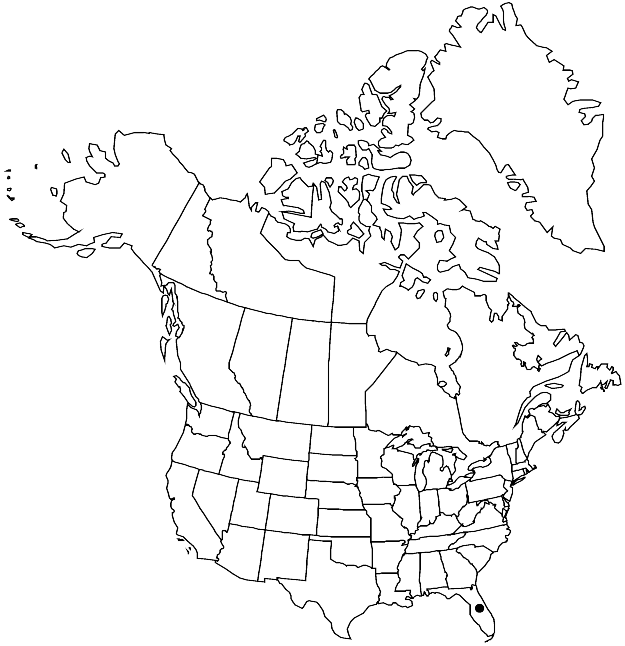Cyrto-hypnum involvens
Contr. Univ. Michigan Herb. 17: 66. 1990.
Stems 1-pinnate, stems and branches smooth; paraphyllia to 8 cells in length, cells 1: 1, sparingly papillose. Stem-leaves flexuose-incurved when dry, ovate-triangular, (0.3–) 0.5–0.6 mm; apex ± abruptly short-acuminate; costa disappearing in but not filling acumen. Branch leaves strongly incurved when dry, 0.5 mm; apex obtuse to acute; costa 7/8 leaf length, ± flexuose, not covered with cells apically. Perichaetial leaves with margins subentire proximally or with few coarse, blunt teeth, laxly serrulate distally. Seta papillose. Capsule with endostome cilia single, rarely with rudimentary additional cilium.
Phenology: Capsules mature winter [Nov–Dec(-Mar)].
Habitat: Lowlands, moist forests, limestone, soil, humus, rotten wood
Elevation: low elevations
Distribution

Fla., Mexico, West Indies, Central America, n South America
Discussion
Cyrto-hypnum involvens is distinguished by its 1-pinnate stems, strongly incurved leaves, non-ciliate perichaetial leaves, and rough seta. The aspect is quite different from the other species in the genus. Cyrto-hypnum involvens occurs between 0 and 1000 m elevation south of the flora area.
Selected References
None.
Lower Taxa
"flexuose" is not a number.
